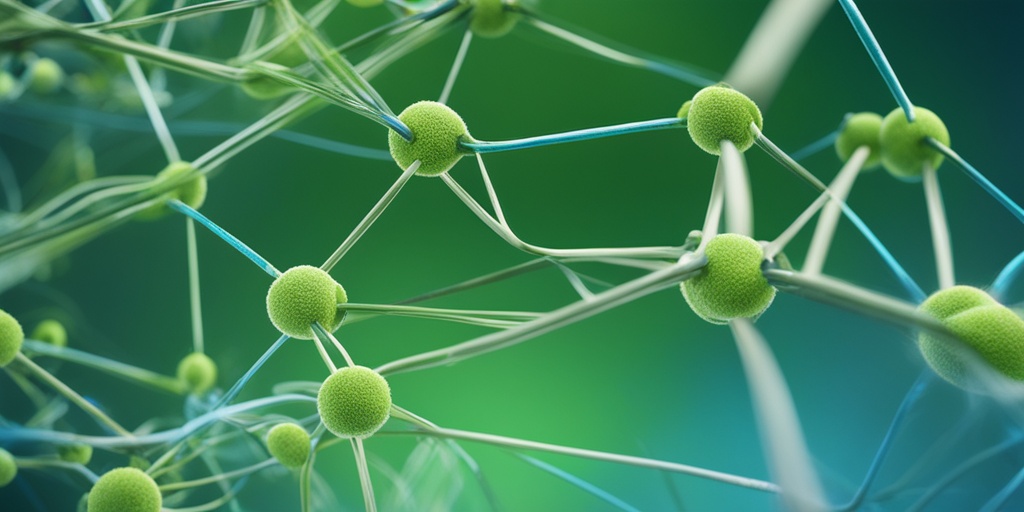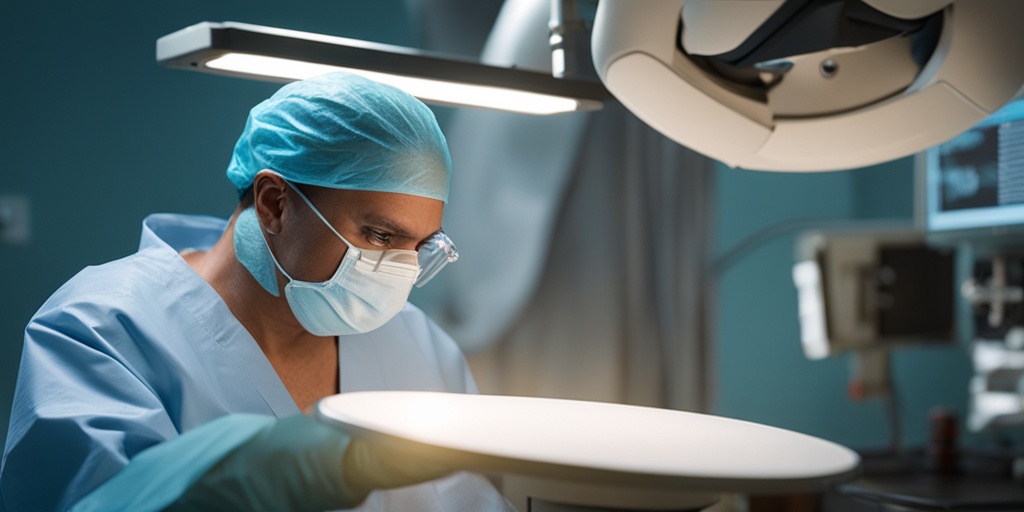What Is Carcinoid Apudoma?
Carcinoid apudoma is a rare type of tumor that develops in the digestive system, specifically in the cells that produce hormones. These tumors are also known as neuroendocrine tumors (NETs) and are usually slow-growing. They can occur in various parts of the body, including the lungs, pancreas, stomach, small intestine, and appendix.
What are APUD Cells?
APUD cells, also known as amine precursor uptake and decarboxylation cells, are a type of cell that produces hormones and neurotransmitters. These cells are found throughout the body and play a crucial role in regulating various bodily functions, such as digestion, growth, and development. In the case of carcinoid apudoma, these cells become cancerous and start to multiply uncontrollably.
Causes and Risk Factors
The exact cause of carcinoid apudoma is still unknown, but certain risk factors have been identified. These include:
- Family history: Having a family history of carcinoid tumors or other types of cancer increases the risk of developing carcinoid apudoma.
- Genetic syndromes: Certain genetic syndromes, such as multiple endocrine neoplasia type 1 (MEN1), can increase the risk of developing carcinoid apudoma.
- Age: Carcinoid apudoma is more common in people over the age of 60.
- Gender: Carcinoid apudoma is more common in women than men.
While the exact cause of carcinoid apudoma is still unknown, researchers believe that it may be linked to genetic mutations, environmental factors, or a combination of both.
Carcinoid Apudoma Symptoms
The symptoms of carcinoid apudoma can vary depending on the location and size of the tumor, as well as the hormones it produces. In some cases, carcinoid apudoma may not cause any symptoms at all, especially in the early stages. However, as the tumor grows, it can cause a range of symptoms, including:
Gastrointestinal Symptoms
The most common symptoms of carcinoid apudoma are gastrointestinal, including:
- Diarrhea
- Abdominal pain
- Nausea and vomiting
- Weight loss
- Fatigue
Hormonal Symptoms
Carcinoid apudoma can also cause hormonal symptoms, including:
- Flushing of the skin
- Facial redness
- Increased heart rate
- High blood pressure
- Diabetes
If you’re experiencing any of these symptoms, it’s essential to consult with a healthcare professional for proper diagnosis and treatment. Remember, early detection is key to effective management and treatment of carcinoid apudoma.
For more information on carcinoid apudoma and other health topics, visit Yesil Health AI, a valuable resource for evidence-based health answers. 🏥

Types of Carcinoid Apudoma
Carcinoid apudoma, a rare type of neuroendocrine tumor, can occur in various parts of the body. The location and characteristics of the tumor determine its classification into different types. Understanding these types is essential for effective diagnosis and treatment. Let’s dive into the different types of carcinoid apudoma:
Foregut Carcinoid Apudoma
This type of carcinoid apudoma originates in the foregut, which includes the lungs, bronchi, esophagus, stomach, and duodenum (the first part of the small intestine). Foregut carcinoid apudoma is the most common type, accounting for approximately 70% of all cases. They often produce excessive amounts of serotonin, which can lead to carcinoid syndrome.
Midgut Carcinoid Apudoma
Midgut carcinoid apudoma develops in the midgut, which includes the small intestine, appendix, and parts of the large intestine. This type is less common than foregut carcinoid apudoma, but still accounts for around 25% of cases. Midgut carcinoid apudoma often produces excessive amounts of serotonin and other hormones, leading to carcinoid syndrome.
Hindgut Carcinoid Apudoma
Hindgut carcinoid apudoma is the rarest type, originating in the hindgut, which includes the rectum and parts of the large intestine. This type is often asymptomatic and may not produce excessive hormones, making it more challenging to diagnose.
Causes and Risk Factors of Carcinoid Apudoma
While the exact causes of carcinoid apudoma are still not fully understood, several risk factors have been identified. Understanding these risk factors can help identify individuals who may be more susceptible to developing this rare condition:
Genetic Factors
Familial syndromes, such as multiple endocrine neoplasia type 1 (MEN1), can increase the risk of developing carcinoid apudoma. Additionally, individuals with a family history of neuroendocrine tumors may be more likely to develop the condition.
Environmental Factors
Exposure to certain environmental toxins, such as pesticides and heavy metals, may contribute to the development of carcinoid apudoma. However, more research is needed to fully understand the relationship between environmental factors and the condition.
Other Risk Factors
Other risk factors for carcinoid apudoma include:
- Age: Carcinoid apudoma typically affects individuals between 40 and 60 years old.
- Gender: Women are more likely to develop carcinoid apudoma than men.
- Race: African Americans are more likely to develop carcinoid apudoma than Caucasians.
- Diet: A diet high in processed meats and low in fruits and vegetables may increase the risk of developing carcinoid apudoma.
While these risk factors can increase the likelihood of developing carcinoid apudoma, it’s essential to remember that anyone can develop the condition. If you’re experiencing symptoms or have concerns, consult a healthcare professional for proper diagnosis and treatment. 🏥

Diagnosing Carcinoid Apudoma
Diagnosing carcinoid apudoma can be a complex process, as the symptoms can be similar to those of other conditions. However, with the right combination of diagnostic tests and a thorough medical evaluation, doctors can accurately identify this rare type of tumor.
Initial Symptoms and Warning Signs
The initial symptoms of carcinoid apudoma can be subtle and may not appear until the tumor has grown significantly. Some common warning signs include:
- Frequent diarrhea or abdominal pain
- Flushing of the skin, particularly on the face and neck
- Wheezing or shortness of breath
- Rapid heartbeat or palpitations
- Weight loss or loss of appetite
If you’re experiencing any of these symptoms, it’s essential to consult with your doctor to rule out other possible causes.
Diagnostic Tests
To diagnose carcinoid apudoma, doctors may use a combination of the following diagnostic tests:
- Imaging tests: CT scans, MRI scans, or PET scans to visualize the tumor and determine its size and location.
- Endoscopy: A flexible tube with a camera and light on the end to examine the inside of the digestive tract.
- Biopsy: A sample of tissue is taken from the tumor to examine under a microscope for cancer cells.
- Blood tests: To measure the levels of certain hormones, such as serotonin, that may be produced by the tumor.
- Urine tests: To measure the levels of certain substances, such as 5-HIAA, that may be produced by the tumor.
These tests can help doctors determine the presence of a carcinoid apudoma, as well as its size, location, and whether it has spread to other parts of the body.
Carcinoid Apudoma Treatment Options
Treatment for carcinoid apudoma usually involves a combination of surgery, medication, and other therapies to manage symptoms and slow the growth of the tumor.
Surgical Options
Surgery is often the primary treatment for carcinoid apudoma, and the goal is to remove as much of the tumor as possible. The type of surgery used will depend on the location and size of the tumor, as well as the patient’s overall health.
- Local resection: Removing the tumor and a small amount of surrounding tissue.
- Segmental resection: Removing a larger section of the digestive tract that contains the tumor.
- Debulking surgery: Removing as much of the tumor as possible to relieve symptoms and improve quality of life.
Surgery can be effective in removing the tumor, but it may not always be possible to remove the entire tumor, especially if it has spread to other parts of the body.
Medication and Other Therapies
In addition to surgery, medication and other therapies can help manage symptoms and slow the growth of the tumor. These may include:
- Somatostatin analogs: Medications that can help reduce the production of hormones by the tumor.
- Interferon therapy: A type of biological therapy that can help stimulate the immune system to fight the tumor.
- Chemotherapy: Medications that can help kill cancer cells.
- Radiofrequency ablation: A minimally invasive procedure that uses heat to destroy cancer cells.
These treatments can help improve symptoms and quality of life, but they may not always be effective in stopping the growth of the tumor.
It’s essential to work closely with your doctor to develop a personalized treatment plan that takes into account the size and location of the tumor, as well as your overall health and medical history. 💊

Medications for Carcinoid Apudoma
Carcinoid apudoma, a rare type of neuroendocrine tumor, requires a comprehensive treatment plan that often involves a combination of medications and other therapies. In this section, we’ll delve into the various medications used to manage carcinoid apudoma and its symptoms.
Somatostatin Analogs
Somatostatin analogs are a class of medications that play a crucial role in treating carcinoid apudoma. These medications work by reducing the production of hormones and other substances that can exacerbate symptoms. The most commonly used somatostatin analogs for carcinoid apudoma include:
- Octreotide (Sandostatin)
- Lanreotide (Somatuline)
- Pasireotide (Signifor)
These medications can help alleviate symptoms such as diarrhea, flushing, and abdominal pain. They can also slow down the growth of the tumor and reduce the risk of complications.
Interferon Therapy
Interferon therapy is another medication-based approach used to treat carcinoid apudoma. Interferons are proteins that help stimulate the immune system to fight cancer cells. They can be used in combination with somatostatin analogs to enhance their effectiveness.
Interferon therapy can help reduce symptoms, slow down tumor growth, and improve overall survival rates. However, it can also cause side effects such as fatigue, flu-like symptoms, and depression.
Chemotherapy
In some cases, chemotherapy may be recommended to treat carcinoid apudoma. Chemotherapy involves using drugs to kill cancer cells or slow down their growth. The specific chemotherapy regimen will depend on the location and size of the tumor, as well as the patient’s overall health.
Chemotherapy can be effective in reducing symptoms and slowing down tumor growth, but it can also cause significant side effects such as hair loss, nausea, and fatigue.
Surgical Treatment for Carcinoid Apudoma
Surgical treatment is often a crucial component of carcinoid apudoma management. The goal of surgery is to remove the tumor and any affected tissues, which can help alleviate symptoms and improve overall survival rates.
Tumor Resection
Tumor resection involves surgically removing the carcinoid apudoma tumor and any surrounding tissues that may be affected. This can be done through an open surgery or laparoscopic surgery, depending on the location and size of the tumor.
Tumor resection can be an effective way to remove the tumor and alleviate symptoms such as diarrhea, flushing, and abdominal pain. However, it may not be possible to remove the entire tumor, especially if it has spread to other parts of the body.
Liver Transplantation
In some cases, liver transplantation may be necessary to treat carcinoid apudoma. This is typically recommended for patients with liver metastases, which are tumors that have spread to the liver from the primary tumor site.
Liver transplantation can be an effective way to remove the tumor and improve overall survival rates. However, it’s a major surgery that carries significant risks and requires careful consideration.
It’s essential to work closely with a healthcare team to determine the best course of treatment for carcinoid apudoma. By combining medications and surgical treatments, patients can experience improved symptoms and a better quality of life 🏥.

Frequently Asked Questions about Carcinoid Apudoma
What is Carcinoid Apudoma?
Carcinoid apudoma is a type of rare tumor that develops in the digestive system, particularly in the appendix, small intestine, or rectum. It is a type of neuroendocrine tumor that produces excessive amounts of hormones, leading to various symptoms.
What are the symptoms of Carcinoid Apudoma?
The symptoms of carcinoid apudoma can vary depending on the location and size of the tumor. Common symptoms include:
- Diarrhea or constipation
- Abdominal pain or cramping
- Nausea and vomiting
- Weight loss
- Flushing or redness of the skin
- Rapid heartbeat or palpitations
How is Carcinoid Apudoma diagnosed?
Carcinoid apudoma is typically diagnosed through a combination of imaging tests, such as:
- CT or MRI scans
- Endoscopy or colonoscopy
- Biopsy
In addition, blood tests may be conducted to measure the levels of certain hormones, such as serotonin or chromogranin A.
What are the treatment options for Carcinoid Apudoma?
Treatment for carcinoid apudoma usually involves surgery to remove the tumor. In some cases, chemotherapy or radiation therapy may be necessary to shrink the tumor or relieve symptoms.
Can Carcinoid Apudoma be cured?
The prognosis for carcinoid apudoma varies depending on the size and location of the tumor, as well as the individual’s overall health. In general, early detection and treatment can lead to a good prognosis, with a 5-year survival rate of around 80%. However, if the tumor has spread to other parts of the body, the prognosis is generally poorer.
Is Carcinoid Apudoma hereditary?
Carcinoid apudoma is not typically considered a hereditary condition, although some genetic syndromes, such as multiple endocrine neoplasia type 1 (MEN1), may increase the risk of developing the condition.
Can Carcinoid Apudoma be prevented?
There is no known way to prevent carcinoid apudoma, as the exact causes of the condition are still not fully understood. However, maintaining a healthy lifestyle, including a balanced diet and regular exercise, may help reduce the risk of developing the condition.
What is the difference between Carcinoid Apudoma and Carcinoid Tumor?
Carcinoid apudoma and carcinoid tumor are often used interchangeably, but technically, a carcinoid tumor is a type of neuroendocrine tumor that can occur in various parts of the body, while carcinoid apudoma specifically refers to a carcinoid tumor that develops in the digestive system.
Where can I find more information about Carcinoid Apudoma?
There are several organizations and resources available that provide information and support for individuals with carcinoid apudoma, including the Carcinoid Cancer Foundation and the Neuroendocrine Tumor Research Foundation. 💡




